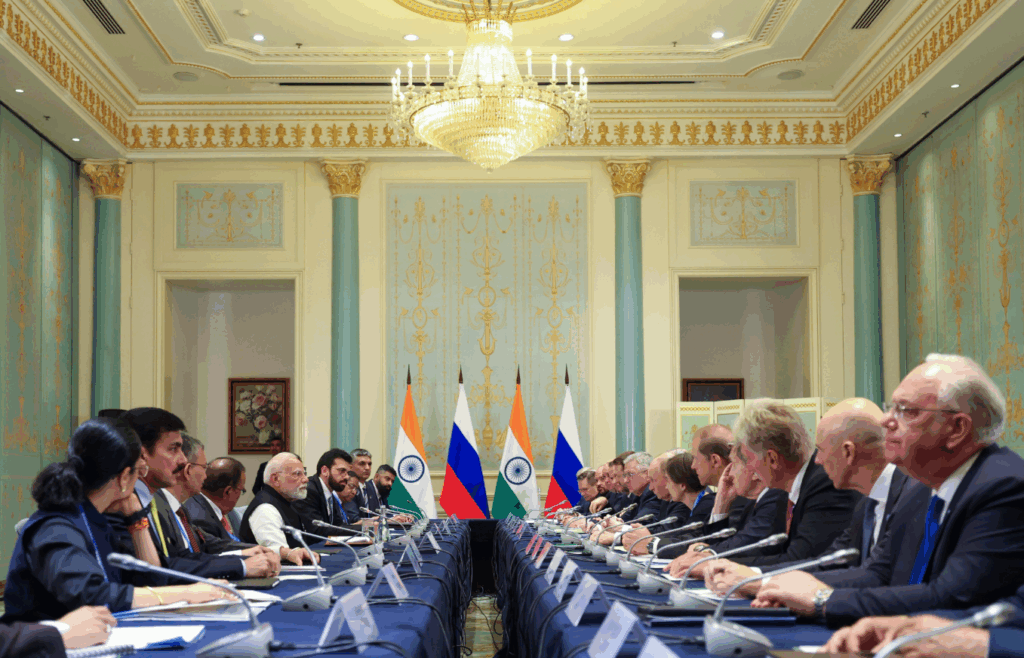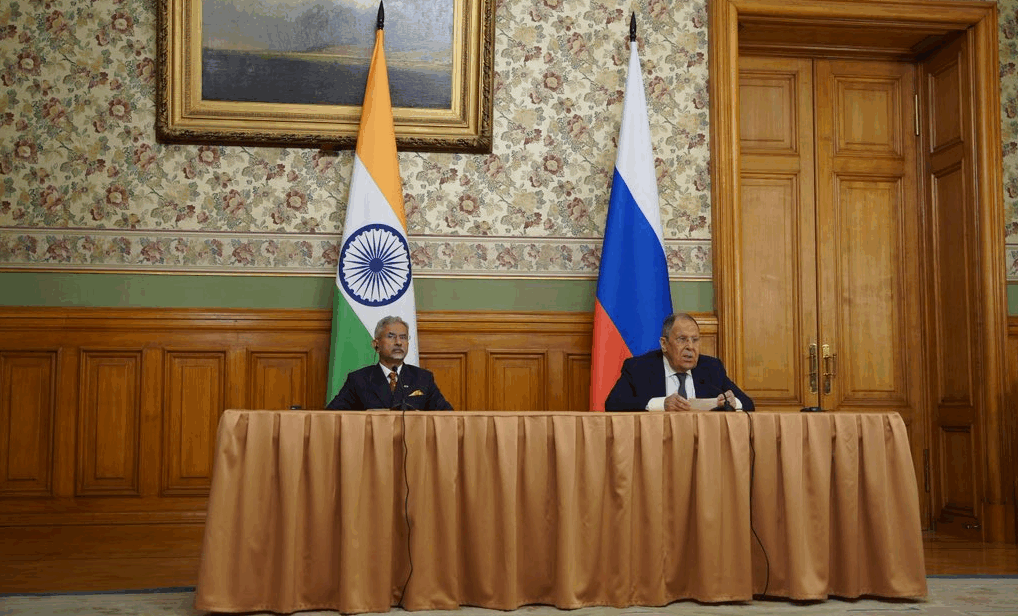Indian External Affairs Minister S. Jaishankar visited Moscow from August 19 to 21 to reinforce bilateral ties despite U.S. scrutiny of Russian oil imports. Yet, New Delhi’s intention went beyond purchasing oil, moving towards a more durable and diverse trade that can withstand international pressure and sanctions.
The visit highlighted trade mechanics, logistics, market access, and financial settlement mechanisms. A free trade agreement (FTA) and floating liquid natural gas (LNG) purchase was also on the table. This is a response to India’s attempt at diversification.
Jaishankar in Moscow
US officials blame India of indirectly financing the war in Ukraine by purchasing Russian oil. “ However, this pressure campaign has come at a time when international observers increasingly see Russia in a position of strength at the diplomatic table.” (Tiwari, 2025).
Jaishankar co-chaired the India-Russia Inter-Governmental Commission on Trade, Economic, Scientific, Technological and Cultural Cooperation (IRIGC-TEC) that emphasized payment facilitation, connectivity and logistics, and market access. This will set terms for the India-Eurasian Economic Union (EAEU) FTA and boost the current bilateral trade volume from USD $68.7 billion to USD $100 billion by 2030.
Rupees Settllement Efforts
India has recently eased payment barriers with Russia by reforming Special Rupee Vostro Accounts. The Reserve Bank of India removed prior-approval requirements and allowed surplus rupee balances to be invested in government securities, giving Russian exporters better returns. Despite these changes, convertibility challenges and risks of secondary sanctions limit the appeal of rupee settlements. To address this, India and Russia are exploring a dynamic reference exchange rate, though its success depends on sustaining high bilateral trade volumes.
Jaishankar’s visit can be seen as an attempt to stabilize and strengthen India-Russia ties despite mounting U.S. pressure.

Expanding Trade
Efforts to expand economic relationships include trade corridors and an increase in focused market access, translating in the revival of long-stalled projects. On the logistics front, Vladivostok-Chennai (Eastern Maritime Corridor), first announced in 2019, was made operational last year, cutting 15 to 16 days off the traditional route. This reflects in coal shipments rising by 87% and oil 48%. In parallel, the International North-South Transport Corridor has also increased trade volumes.
With the ongoing Indía-EAEU FTA, India seeks an entrance market for pharmaceuticals, machinery and processed foods. This as textiles and garments of New Delhi are unlikely to be competitive in the EAEU zone. Yet, non-tariff barriers remain critical, particularly certification and conformity requirements across the Eurasian Economic Union.
Diversifying Energy Cooperation?
Russia proposed supplying more LNG to India, though sanctions and existing Qatari contracts limit prospects. Unlike crude oil, LNG projects depend heavily on long-term contracts and Western infrastructure. India remains cautious about sanctioned Russian LNG, preferring secure alternatives while continuing crude imports under flexible arrangements.
Jaishankar’s visit aimed at making practical progress on payments, logistics, and market access. Results will depend on sustained reforms and operational success of trade mechanisms. President Putin’s expected visit to India later this year may further test whether these initiatives translate into durable economic cooperation.
Reference
Tiwari, S. (2025, September 12). Can India and Russia build a durable economic partnership? South Asian Voices. https://southasianvoices.org/ec-m-in-n-india-russia-economic-ties-09-12-2025/
